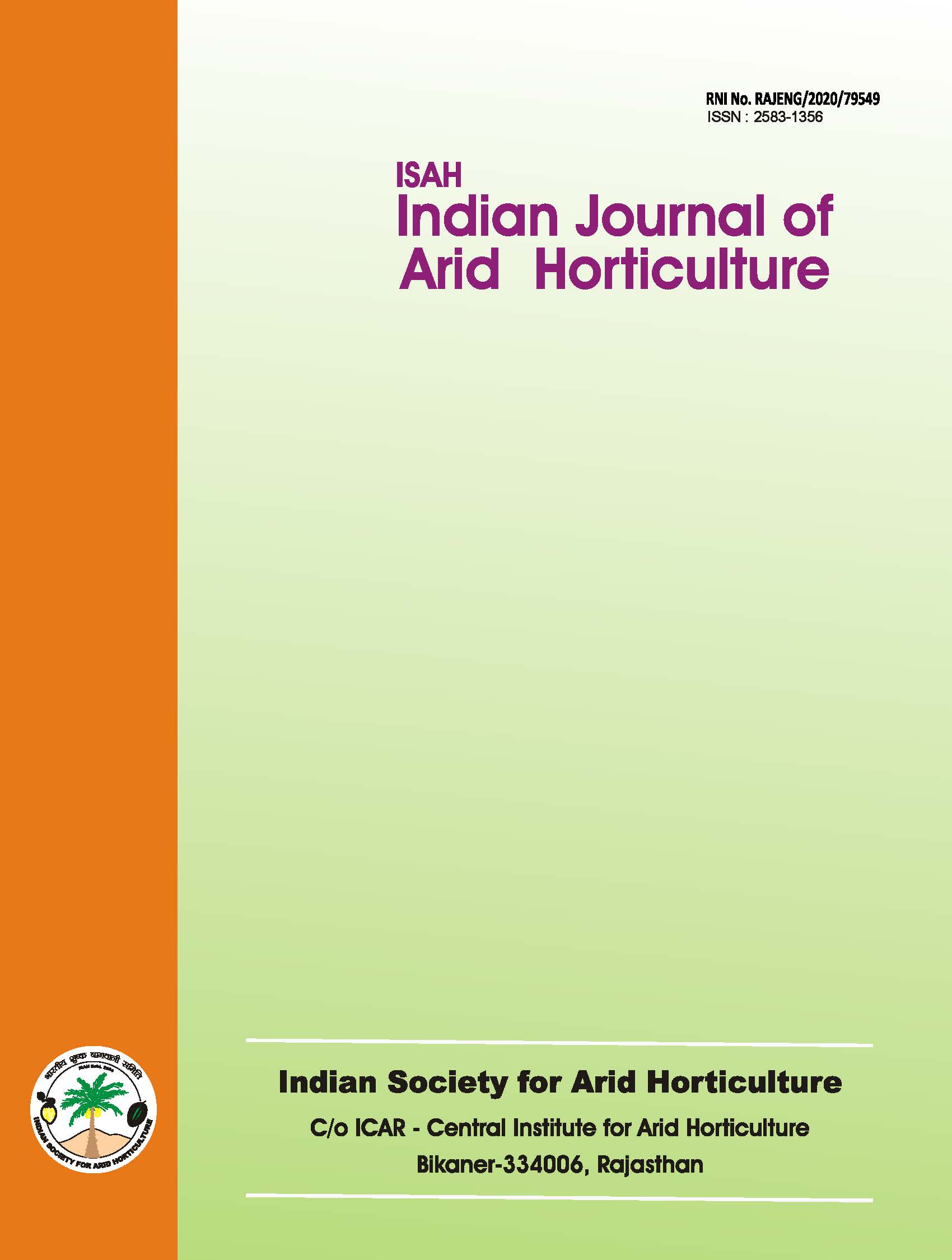Evaluation of drip irrigation to kinnow in south-west Punjab
Keywords:
Drip irrigation, pipe irrigation, root density, soil moisture profile, soil salinityAbstract
Kinnow is a major fruit crop in southwest Punjab, mainly canal irrigated, as the ground water is brackish. The inadequacy of the canal water warrants the use of the improved methods of irrigation including the drip system. Field experiments to evaluate drip and basin system versus basin were laid out in quadruplicate with a unit of five trees per replication and three levels of irrigation 35, 55, 75 per cent of pan evaporation. Drip system saved similar amount of water under all levels of irrigation allowing 142% net additional area irrigable on replacing basin irrigation. Drip irrigation increased the water content in the wetted zone, which increased the rooting density. Use of sodic water for over 2.5 years increased the soil pH and the electrical conductivity. The method could not become popular for lack of field verification of experimental results. Field verification of productive orchards drip irrigated from the beginning supported the experimental data. Thus the amount of water to be applied to kinnow through drip irrigation has been recommended. The recommendation is likely to increase the orchard area under drip system in the region.Downloads
References
Ananth Kumar, A. P. and Bojappa K. M. 1994. Studies on the effect of drip irrigation on yield and quality of fruits in sweet oranges (Citrus sinensis Losbeck) and economy in water use. Mysore J Agric. Sci. 28:338-44
Blaine, H. and Don, M. 2003. Drip irrigation increases tomato yield in salt-affected soil of San Joaquin Valley. California Agriculture 57(4): 132-137.
C. J. S. Sethi, C. B. Singh, Ajab S. Sidhu, A. S. Sidhu and H. S. Gulati. Indian Journal of Arid Horticulture, 2008, Vol. 3 (1): 16-20
Charles, M B., Brett, I. and Lisa, B. 2003. Long-term salinity
buildup on drip/micro irrigated trees in California.
Presented at the IA Technical Conference in San
Diego, CA, Nov. 18, 2003:1-11.
Choi, CY and Suarez REM 2004. Surface drip irrigation for Bermuda grass with reclaimed water. Trans.
ASAE:1943-1951.
Doorenbos, J. and Pruitt, W. O. 1975. Guidelines for predicting crop water requirements. Irrigation and Drainage Paper FAO, UN, Rome
Goldsberg, S. D. and Schumeli 1969. Trickle irrigation a method for increased agricultural production under conditions of saline water and adverse soils. In Proc. Conf. Arid lands in a changing world Tucson Arizona
Dhindwal, A. S., Agarwal, M. C., Jaiswal, C. S., Ram Deo, Prabhakar, J. and Aujla M. S. 1999. Status of research on agricultural water management in Northern region. AICRP on water management. Directorate of water management research. Walmi complex. Patna.
Nakayama, F. S. and Buchs, D. A. 1986. Scheduling trickle
irrigation in trickle irrigation for crop production
design, operation and
management.
Developments in Agril. Engg, 9. Elsevier Science
Publishers. Amsterdam
Sivanappan, R. K. 1992. New irrigation techniques for grapes. Drakshvritta Smamika pp: 7-13 Singh, C. J. 2003. Efficient use of water in canal command area of Punjab. In Rao, CH Hanumantha, Ramprasad Sengupta, K Chopra (eds), Water Resources, Sustainable livelihood and Ecosystem services. Indian Society for Ecological Eco nomics. Concept Publishing Company, New Delhi. Pp: 169-193
Singh, C. J., Gulati, G. S. and Chahil, B. S. 2005. Installation and maintenance of drip irrigation system in orchards. Horticulture Newsletter. April-June 2005, 1(11):3-

